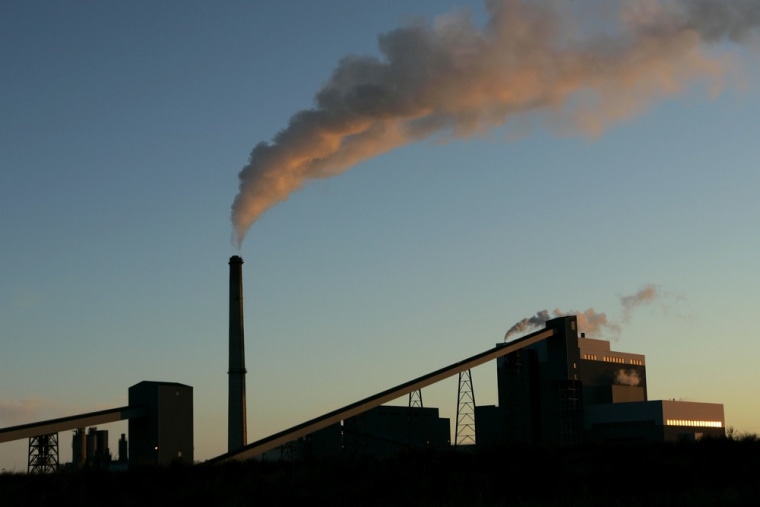
The Obama administration on Friday unveiled new regulations setting strict limits on the amount of carbon pollution that can be generated by any new U.S. power plant, which are certain to face legal challenges and a backlash from congressional supporters of the coal industry.
The Environmental Protection Agency's long-awaited guidelines are expected to make it more difficult for new coal-fired power plants to be built.
The rules, which are a revision of a previous attempt by the EPA to create emissions standards for fossil fuel plants, are the first salvo in President Barack Obama's climate change package, announced in June.
In a speech at the National Press Club in Washington, EPA Administrator Gina McCarthy discussed the rationale behind new rules, and defended Obama's climate plan, which opponents say amounts to a "war on coal."
"There needs to be a certain pathway forward for coal to be successful," McCarthy said, adding that "setting fair Clean Air Act standards does not cause the sky to fall."
Sen. Joe Manchin, a West Virginia Democrat, criticized the plan. “Today’s announcement of the EPA’s new source performance standard is direct evidence that this Administration is trying to hold the coal industry to impossible standards. Never before has the federal government forced an industry to do something that is technologically impossible," he said in a statement.
Under the new rules, any new coal plant built in the United States would need to install technology to capture its carbon emissions.
That technology is controversial because it is currently not yet operational on a commercial scale, an issue that could become central to legal challenges to theEPA.
The EPA previously issued a version of the rule last year but made changes to it to address potential legal weaknesses and to factor in over 2 million public comments.
Unlike the 2012 version, the new proposed rule would create separate emissions rates for coal and gas-fired power plants. Legal experts had warned that a single standard, which had been set at 1,000 lb of carbon dioxide per megawatt hour, deviated from the federal Clean Air Act.
Under the updated version, new coal-fired units would need to emit less than 1,100 pounds of CO2 per MWh or, to provide plants the flexibility and time to optimize technologies, between 1,000 and 1,050 pounds of CO2 per MWh on average over 84 months of operation.
A new coal plant could also be built at the current average emissions rate, around 1,800 lb per MWh, but the plant owners would have seven years to bring down its emissions rate to between 1,000 and 1,050 lb per MWh.
This provision is a significant change from the first version, which gave a coal plant 30 years to achieve a 1,000 lb per MWh emissions performance rate.
Under the new rules, newly built large natural gas-fired power plants could emit up to 1,000 lb of carbon dioxide per MWh. Smaller, less efficient natural gas-fired plants could emit up to 1,100 lb of CO2 per MWh.
The EPA will launch a public comment period after the rule's release.
It is due to issue a proposal to address emissions from existing power plants - which account for nearly a third of U.S. greenhouse gas emissions - by June 2014.